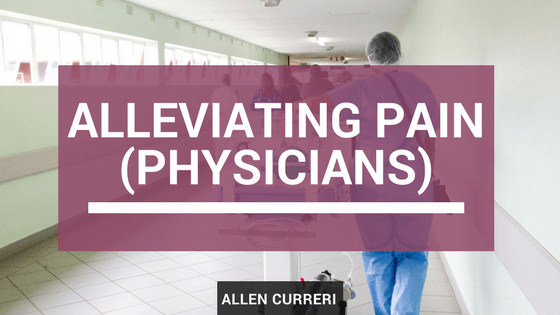A man limps into the emergency room, his face twisted in pain. He hunches through the revolving door, barely able to make it to one of the waiting room’s flimsy plastic chairs before losing his footing. A nurse rushes over to guide him to an exam room and look at his clearly pained leg; he begs for relief from the wheelchair she brings.
He’s in pain, he says. He can’t walk. He needs help; the last doctor who saw him gave him something that relieved the ache. He needs it, more of it. The attending physician comes running to conduct a quick exam but finds nothing. The pain is evident, but the injury is missing. The nurse finds records of the man visiting urgent care centers and pain physicians all over the city, asking for medication. When he hears, the attending looks tired. He explains that he can’t provide the opioids the man asks for and moves on to his next patient – but the man’s pleas seem to follow him out of the room.
In a perfect world, providing medical care would be as simple and straightforward as assembling a puzzle: doctors would speak to the patient and put their symptomatic pieces together to provide a cohesive treatment plan. But in the midst of the opioid crisis, nothing is quite that straightforward. Now more than ever, doctors are forced into the position of deciding whether or not they should provide potent painkillers to patients in seeming agony. As emergency room attending Jay Baruch put it in an article on the subject: “Opioids — whether it’s Vicodin or oxycodone or many others — have transformed [pain] into a moral and clinical cage fight. This struggle is lost in the headlines that blame physicians for the opioid crisis. It ignores the on-the-ground experiences of many of us who strive to do the right thing when the “right thing” is the very thing in question.”
And make no mistake – defining the “right thing” is notoriously hard. According to recently-published statistics, over 64,000 people lost their lives to drug overdoses in 2016, propelling addiction above car accidents as a leading cause of death in the United States. Scenarios like the one outlined above aren’t all that uncommon; desperate addicts often frequent emergency care centers and doctor’s offices looking for their next pill. Given that so many addicts begin their struggles with substance abuse after misusing their own or a family member’s prescribed opioids, treating physicians can be understandably hesitant to prescribe powerful painkillers. But to label all patients who come in asking for pain relief as addicts seeking a fix is to grossly reject patients who desperately need relief from severe or even chronic pain. To quote Dr. Baruch again: “In a profession built on the moral precept of “do no harm,” physicians’ biases and judgments can devalue patients and push away people already isolated by their pain.” This is where our physicians’ moral quandary comes into play. How do we decide who receives compassionate treatment and who is shouldered to the side? How do we, as humans, cope with needing to make that choice?
While I’d like to provide answers to those questions, I don’t have them. This issue is thorny; it won’t resolve for years. But I do want to take a moment to reframe the conversation around the crisis to address its impact on the physicians on the front line. When we discuss the opioid epidemic we usually – and rightly – talk about the patients. We discuss procedures for handling prevention, treatment, responses, and support – all while expecting doctors to manage the influx of often tragic cases with grace and composure. The problem is, doctors are human too; frequent exposure to the anger, frustration, pain, and desperation that comes part and parcel with addiction can be emotionally damaging for medical professionals. According to a study published in a 2016 issue of the Pain Physician Journal, nearly two-thirds of surveyed doctors who specialized in pain management reported “high levels of emotional exhaustion, indicating they find their work draining, stressful, demanding, and frustrating. High emotional exhaustion puts American pain physicians at risk for a number of negative outcomes that have been associated with burnout.” In fact, the same study found that job dissatisfaction was the leading factor in pain medicine physician burnout and resignation, even over job insecurity. The opioid epidemic has placed our physicians into a crisis mode – but can we reasonably expect them to function under this amount of emotional stress for weeks, months, or years at a time?
America’s problem with prescription drug abuse isn’t going away anytime soon. While some promising research has shown that non-opioid medications have the potential to work just as well for some long-term chronic pain patients, opioids still have their place in treating extreme cases such as terminal cancer or recovering surgery patients. We can’t just do away with opioids – but finding a balance way to use them will likely take time that our burned-out and emotionally overtaxed physicians just don’t have. We need to institute structures that can alleviate the burden on our pain- and emergency room physicians and provide some form of support when the pressure of a shift gets to be too heavy. We’ll need every doctor we have to pull us through this time of crisis; we can’t afford to let them down now.


